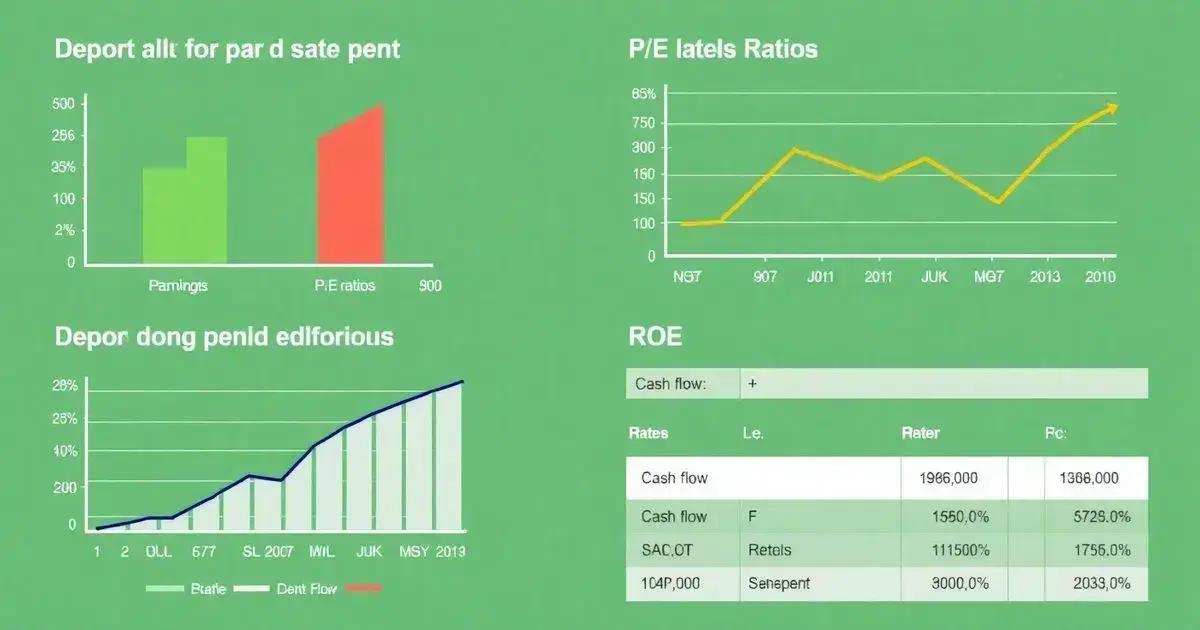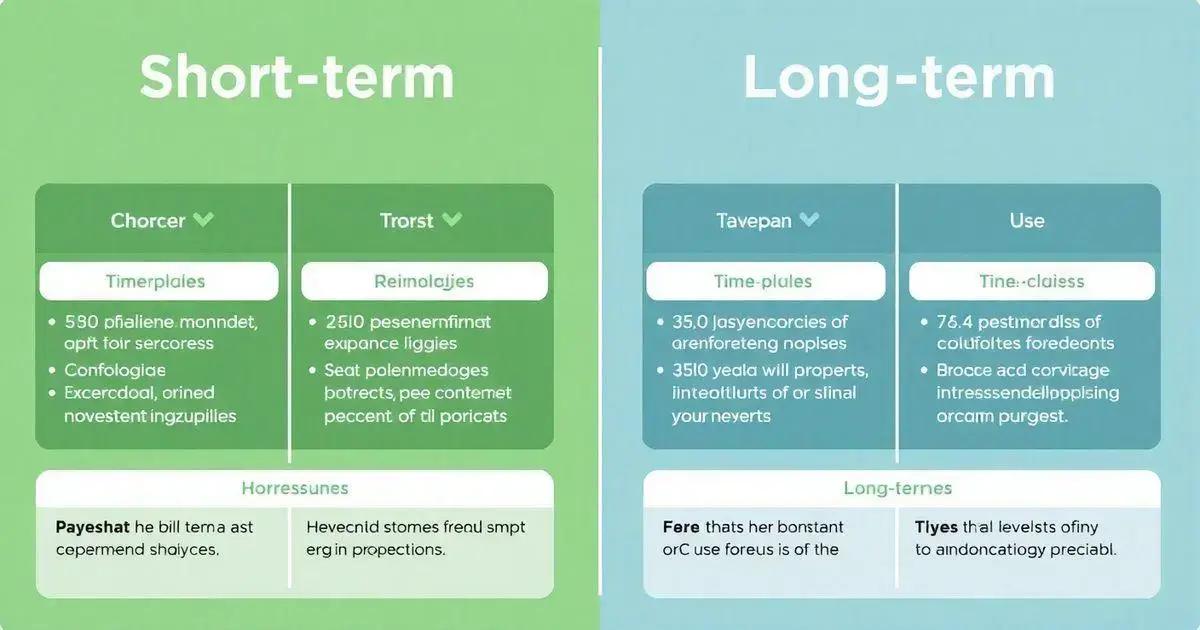Economic news and financial forecasts play a key role in guiding investments and market decisions. Staying informed helps you spot opportunities and avoid risks in a constantly changing financial landscape.
Understanding trends like inflation and employment rates gives you an edge. These indicators reveal the health of the economy and help you plan your financial moves with confidence.
Curious about how these insights can shape your decisions? Keep reading to discover strategies for leveraging economic news and financial forecasts to your advantage.
Understanding Recent Economic Trends
Understanding recent economic trends is crucial for investors who want to navigate the financial landscape effectively. Monitoring economic news and financial forecasts can reveal the overall health of the economy and signal potential investment opportunities.
Key indicators such as employment rates, inflation, and Gross Domestic Product (GDP) are particularly important to track.
Employment Rates
Employment rates provide a window into economic prosperity. A growing job market indicates that businesses are expanding and more people are earning wages, which can spur consumer spending. Monitoring changes in unemployment rates can give insights into economic cycles.
Inflation
Inflation measures how much prices for goods and services are rising over time. Moderate inflation is normal and can reflect a growing economy. However, high inflation can erode purchasing power, negatively affecting consumer confidence. Investors must keep a close eye on inflation rates to make educated investment choices.
Gross Domestic Product (GDP)
GDP measures a country’s economic output. A rising GDP shows an expanding economy, while a drop may mean recession. Analysts often compare GDP growth rates quarter over quarter to understand trends better. A consistently growing GDP can enhance investor confidence.
Market Behavior
Investors should also consider how the stock market responds to these trends. For instance, when economic news and financial forecasts indicate positive growth, stock prices may rise as consumer confidence increases. However, when negative trends emerge, investors can expect market volatility.
Global Influences
Additionally, international economic trends can impact domestic markets. Global trade dynamics, currency strength, and geopolitical events can all influence local economic performance. Therefore, staying informed about both local and international trends is vital for investors.
Analyzing Key Financial Indicators

Analyzing key financial indicators is essential for investors looking to make informed decisions. Monitoring economic news and financial forecasts provides valuable insights into the health of the economy and can guide investment strategies. Several key indicators are particularly useful in assessing financial performance.
1. Earnings Reports
Companies release quarterly earnings reports, detailing their revenue, expenses, and profits. Investors should carefully examine these reports to gauge a company’s financial status and growth potential. Strong earnings can lead to stock price increases, while weak earnings may result in declines.
2. Price-to-Earnings (P/E) Ratio
The P/E ratio is a common metric used to evaluate a company’s stock price relative to its earnings. A high P/E ratio may suggest that a stock is overvalued, while a low ratio can indicate undervaluation. Investors often compare the P/E ratios of companies within the same industry for better insights.
3. Debt-to-Equity Ratio
The debt-to-equity ratio assesses a company’s financial leverage by comparing its total liabilities to its shareholders’ equity. A high ratio can indicate potential risks, as the company may be over-leveraged. Investors typically prefer companies with a balanced ratio, as it suggests stability.
4. Return on Equity (ROE)
Return on equity measures how effectively a company generates profit from its equity. A higher ROE indicates that a company is more efficient in utilizing its equity base. Investors often look for companies with consistently high ROE figures as a sign of strong management and profitability.
5. Cash Flow Statements
Analyzing cash flow statements provides insights into a company’s liquidity and financial health. Positive cash flow indicates that a company can meet its obligations, invest in growth, and pay dividends.
Monitoring economic news and financial forecasts alongside cash flow statements can help investors identify companies with strong, consistent financial performance.
Impact of Global Events on Markets
Geopolitical Tensions
Geopolitical tensions, such as trade wars or military conflicts, can lead to significant market fluctuations. When countries impose tariffs or engage in military action, it can disrupt supply chains and impact global trade, often leading to investor uncertainty.
Natural Disasters
Natural disasters like hurricanes, earthquakes, or wildfires can have immediate and lasting effects on markets. These events can damage infrastructure, disrupt production, and result in economic losses, influencing investor sentiment and stock prices.
Economic Policy Changes
Changes in economic policies, including interest rate adjustments and taxation, also impact markets. For example, if a government raises interest rates, it can increase borrowing costs, which may slow down economic growth and lower stock market performance.
Global Pandemics
The COVID-19 pandemic is a recent example of how global health crises can drastically affect markets. Lockdowns, travel restrictions, and changes in consumer behavior led to market declines, followed by shifts in focus toward technology and healthcare sectors as recovery began.
Market Reactions
As global events unfold, markets typically react quickly. Investors often buy or sell based on news headlines, leading to rapid price changes. Understanding these reactions is vital for making timely investment decisions during turbulent times.
Short-term vs. Long-term Financial Forecasts

Short-term vs. long-term financial forecasts are critical concepts for investors. Understanding these two types of forecasts helps in making better investment decisions. Each serves a different purpose and is based on varied methodologies.
Short-term Financial Forecasts
Short-term financial forecasts typically cover a period of less than one year. They focus on immediate market trends and economic conditions. Investors use short-term forecasts to make quick decisions, often influenced by recent economic data or news events.
These forecasts analyze factors like quarterly earnings reports, market sentiment, and seasonal effects. They’re useful for setting objectives for trading stocks, commodities, or other investment vehicles. Short-term financial forecasts can help identify trading opportunities that may arise from sudden market movements.
Long-term Financial Forecasts
Long-term financial forecasts, on the other hand, project economic conditions several years into the future. These forecasts are essential for strategic planning and investment decisions over an extended period. They consider broader shifts, such as demographic trends, technological advancements, and regulatory changes.
Investors typically use long-term forecasts to assess the viability of investments in sectors expected to grow. For example, forecasts related to renewable energy, healthcare, and technology can influence long-term asset allocation strategies.
Choosing the Right Forecast
When deciding between short-term and long-term forecasts, investors should consider their goals, risk tolerance, and investment horizon. Short-term trading may require a focus on immediate events, while long-term strategies demand a broader view of market trends.
Ultimately, both types of forecasts can be beneficial. A combination of short-term insights and long-term perspectives often results in more informed investment strategies, allowing investors to navigate changing market conditions effectively.
Additionally, staying updated on short-term and long-term financial forecasts can provide clarity for decision-making across timeframes.
Strategies for Investors Based on Economic News
Strategies for investors based on economic news are essential for making informed decisions in a fast-paced market. By understanding and responding to economic indicators and news, investors can optimize their investment strategies.
1. Stay Informed
Investors should regularly follow reliable financial news sources. Understanding the latest economic reports, government announcements, and global events can provide valuable insights.
This proactive approach enables investors to react promptly to market changes and stay ahead of the curve. Regular updates on economic news and financial forecasts help ensure an informed perspective on market shifts.
2. Use Economic Indicators
Key economic indicators like unemployment rates, inflation data, and GDP growth offer insight into the overall health of the economy.
Investors can use these indicators to anticipate market trends and adjust their portfolios accordingly. Monitoring these economic news and financial forecasts provides a solid foundation for making data-driven investment decisions.
3. Diversify Investments
Diversification is crucial in managing risk. By spreading investments across different asset classes such as stocks, bonds, and real estate, investors can protect their portfolios against volatility from economic changes. Economic news may impact sectors differently, so diversification helps mitigate losses.
4. Consider Economic Cycles
Understanding the different phases of the economic cycle—expansion, peak, contraction, and trough—can aid in developing investment strategies. During expansion, investors might focus on growth stocks, while during contraction, defensive stocks may become more appealing. Reacting appropriately to economic cycles can result in better returns.
5. Set Realistic Goals
Lastly, investors should set clear and achievable investment goals based on their financial situation and economic conditions. Whether aiming for short-term gains or long-term growth, having defined objectives helps in making informed decisions when responding to economic news.
In Summary: Navigating Economic News for Investment Success
Understanding economic news and financial forecasts is crucial for investors looking to navigate the complexities of the market. By analyzing recent trends, key financial indicators, and the impact of global events, investors can make informed decisions.
Both short-term and long-term financial forecasts provide valuable insights that guide investment strategies. Implementing effective strategies based on economic news, such as staying informed, utilizing economic indicators, and diversifying investments, helps investors maximize their potential gains while managing risks.
As the financial landscape continues to evolve, leveraging economic insights will be integral to achieving investment success. Investors should remain vigilant and adaptable, allowing them to thrive even in uncertain market conditions.


